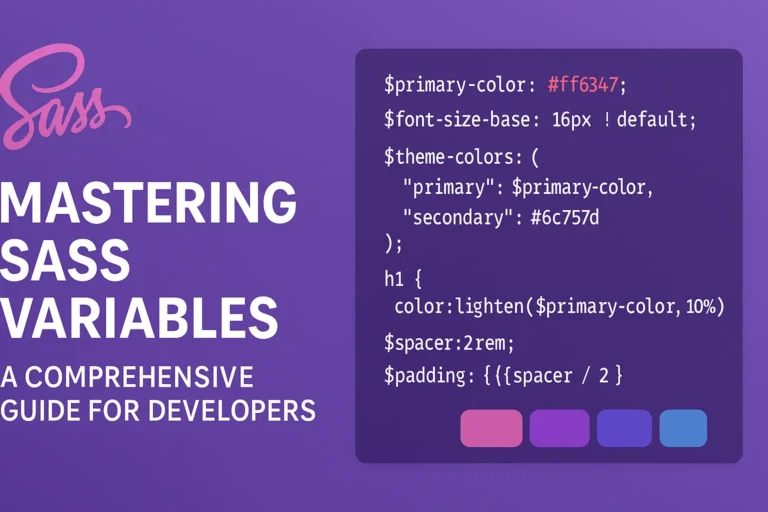This is where CSS preprocessors like SASS (Syntactically Awesome Style Sheets) come into play, offering developers powerful tools to streamline their styling workflow. In this article, we’ll delve into the practical applications of SASS in real-world projects, exploring case studies, best practices, and invaluable tips and tricks.
Case Studies
Streamlining Stylesheets
Consider a large-scale web application with numerous components and stylesheets scattered across the codebase. By integrating SASS, developers can modularize their stylesheets using features like variables, mixins, and partials. This modular approach facilitates code organization, encourages code reuse, and simplifies maintenance.
Example:
// _variables.scss
$primary-color: #007bff;
$secondary-color: #6c757d;
// _buttons.scss
.button {
background-color: $primary-color;
color: white;
border: none;
border-radius: 4px;
padding: 10px 20px;
&.secondary {
background-color: $secondary-color;
}
}
Responsive Design
Creating responsive layouts often involves writing repetitive and verbose CSS code. SASS’s built-in features like nested rules and mixins allow developers to write cleaner and more maintainable code, making it easier to manage complex responsive designs across various screen sizes.
Example:
// _media-queries.scss
@mixin respond-to($breakpoint) {
@media screen and (min-width: $breakpoint) {
@content;
}
}
// main.scss
.container {
width: 100%;
@include respond-to(768px) {
width: 75%;
}
}
Best Practices
Maintain a Consistent File Structure
Adopting a consistent file structure is crucial for SASS projects to ensure readability and maintainability. Utilize partials to break down stylesheets into smaller, more manageable chunks, and organize them within directories based on functionality or component type.
styles/
├── base/
│ ├── _variables.scss
│ ├── _typography.scss
│ └── ...
├── components/
│ ├── _buttons.scss
│ ├── _forms.scss
│ └── ...
├── layout/
│ ├── _header.scss
│ ├── _footer.scss
│ └── ...
└── main.scss
Leverage Mixins and Functions
Harness the power of SASS mixins and functions to encapsulate reusable pieces of styling logic. This not only promotes code reusability but also enhances maintainability by centralizing common styles and behaviors.
// _mixins.scss
@mixin box-shadow($x, $y, $blur, $color) {
box-shadow: $x $y $blur $color;
}
// main.scss
.card {
@include box-shadow(0px, 4px, 8px, rgba(0, 0, 0, 0.1));
}
Tips and Tricks
Use @extend Sparingly
While the @extend directive can be useful for sharing styles between selectors, it can also lead to unintended consequences like bloated CSS output and specificity issues. Exercise caution and prefer mixins or placeholder selectors where possible.
Optimize Output
Take advantage of SASS’s built-in features like compression and sourcemaps to optimize your stylesheet output for production. Minifying CSS files reduces file size and improves page load times, while sourcemaps facilitate easier debugging by mapping compiled CSS back to the original SASS files.
sass input.scss output.css --style compressed --sourcemap=none
Conclusion
In conclusion, integrating SASS into real-world projects offers numerous benefits, from improving code organization and maintainability to enhancing workflow efficiency. By leveraging its powerful features, adhering to best practices, and implementing valuable tips and tricks, developers can harness the full potential of SASS to create robust and scalable stylesheets for their web applications.






